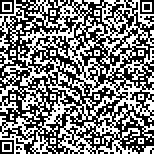下载中心
优秀审稿专家
优秀论文
相关链接
摘要

对海温分布与变化的探测是海洋一号卫星主载荷水色水温扫描仪(简称水色仪,COCTS)的主要任务之一。考虑到对海冰和海洋上空台风等气象要素的同时探测,实际水温探测通道的动态范围要求涵盖200—320 K的温度区间。由于某些洋面区域微弱温度的变化将会导致严重天气灾害的发生,因此海温探测通道还需满足探测灵敏度与定量化的精度要求。本文旨在依据技术指标要求,设计水色仪红外通道的信息获取电路,包括对探测器微弱信号进行放大的前置放大电路,消除基础电平以提高动态范围的交流放大器,以及实现信号的直流恢复与动态范围调整的通道放大电路。基于对所使用的光导型红外探测器工作机理的研究,结合水色仪的系统组成与特性,为确保同时满足高动态范围与高灵敏度这一对相互矛盾的指标要求,通过理论分析计算、电路仿真等方法,确定各级放大电路的形式及参数。在真空环境模拟实验室对水色仪的系统性能进行测定,以验证信息获取电路设计的合理性。在实验室进行的红外辐射定标结果表明和在轨测试结果均表明,水色仪两个红外通道的动态范围和噪声等效温差(
Since 2000, China has launched four sun-synchronous ocean optical remote sensing satellites, namely, HY-1A, HY-1B, HY-1C, and HY-1D. The detection of Sea Surface Temperature (SST) distribution and variation is one of the main tasks of Chinese Ocean Color and Temperature Scanner (COCTS), which is the main load of HY-1 satellite. The dynamic range of the actual water temperature detection channel is required to cover the temperature range of 200 K to 320 K, considering the detection of sea ice, typhoon, and other meteorological elements over the ocean. The variation of temperature in some ocean areas leads to severe weather disasters. Thus, SST detection channels should satisfy the requirements of detection sensitivity and quantification accuracy.This study aims to design an information acquisition circuit of infrared channel for COCTS according to the technical requirements, including a pre-amplifier circuit to amplify the weak signal of the detector, AC amplifier, which eliminates the basic level to improve the dynamic range, and the channel amplifier circuit, which can realize the DC recovery and dynamic range adjustment of the signal.Based on the study of the working mechanism of the photoconductive infrared detector used, and combined with the system composition and the characteristics of COCTS, the form and parameters of each stage amplifier circuit were determined thru theoretical analysis, calculation, and simulation to ensure that the contradictory requirements of high dynamic range and high sensitivity are met at the same time. The corresponding high-pass and low-pass filter are designed to achieve stable reference level detection and single pixel signal detection of the whole field of view. The system performance of COCTS is measured in the vacuum environment simulation laboratory to verify the reasonability of information acquisition circuit design.Results of the infrared radiometric calibration in the laboratory show that the dynamic range of the two infrared channels covers 177 to 327 K and 173 to 324 K; they satisfy the technical requirements of 200 to 320 K. The Noise Equivalent Temperature Difference (NETD) of the two infrared channels in the whole dynamic range is between 20 and 110 mK. At the appraisal position of 300 K, NETD has reached 21 to 34 mK, which is much better than the technical requirements of 0.2 mK. The space test environment is more complex than the laboratory, and the measuring accuracy has some differences. The results of in orbit test show that the dynamic range of the two infrared channels is 186 to 328 K and 185 to 326 K, and the NETD in the whole dynamic range is between 50 mK and 110 mK, according to the window size of the selected target area. The performance is better than the technical requirements.Conclusion The infrared channel can track the change in the blackbody signal on the satellite with modifications in time and the surrounding environment. Thus, the calibration coefficient of the infrared channel can be corrected in real-time. The expected goal of real-time radiometric calibration in orbit can be achieved. This lays a foundation for the quantitative inversion of SST and can obtain and develop high-quality global SST products.

